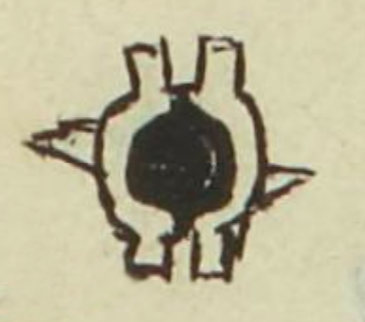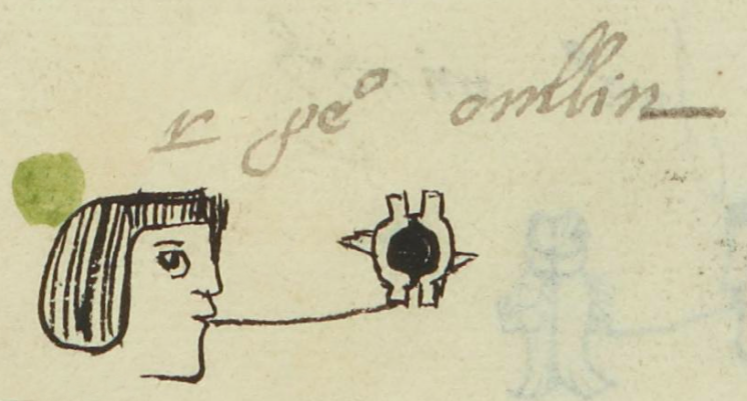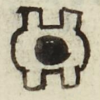Olli (MH518v)
This black-line drawing of the compound glyph for the personal name Olli ("Rubber" or "Rubber Ball," attested here as a man's name) doubles as the glyph for movement (olin). It has a black round center which seems to be a black rubber ball (olli), and framing this center are two upright shapes that curve around it but extend above and below it in straight lines. Pointed protrusions come off both the left and right side of this complex.
Stephanie Wood
Olin was a day name in the 260-day divinatory calendar called the tonalpohualli in Nahuatl. This calendar had a role in various Mesoamerican religions, including the Mixtec.
The gloss, with its two intrusive "n's" could represent an effort to clarify that the glyph is olin, but the visuals seem to emphasize olli. The size of the black ball in the center of this glyph points to the noun olli (rubber, or rubber ball) as a possible emphasis. The structure around the ball provides a phonetic complement by including the near homophone ("olin," movement) in the glyph complex. Rubber, of course, has an association with movement and especially the movement of the sun depicted in the ball game (see James Maffie, Aztec Philosophy, 2014, 197–199). See Maffie (2014,185–260) for a fuller discussion of olin, too. See below for some other examples of olli and olin.
Stephanie Wood
peo onllin
Pedro Olin
Stephanie Wood
1560
Jeff Haskett-Wood and Stephanie Wood
movement, movimiento, hule, pelotas, balls, rubber, nombres de hombres

ol(in), movement, earthquake, https://nahuatl.wired-humanities.org/content/olin
ol(li), rubber, ball, https://nahuatl.wired-humanities.org/content/olli
Movimiento, o Temblor
Stephanie Wood
Matrícula de Huexotzinco, folio 518v, World Digital Library, https://www.loc.gov/resource/gdcwdl.wdl_15282/?sp=116.
This manuscript is hosted by the Library of Congress and the World Digital Library; used here with the Creative Commons, “Attribution-NonCommercial-ShareAlike 3.0 License” (CC-BY-NC-SAq 3.0).









